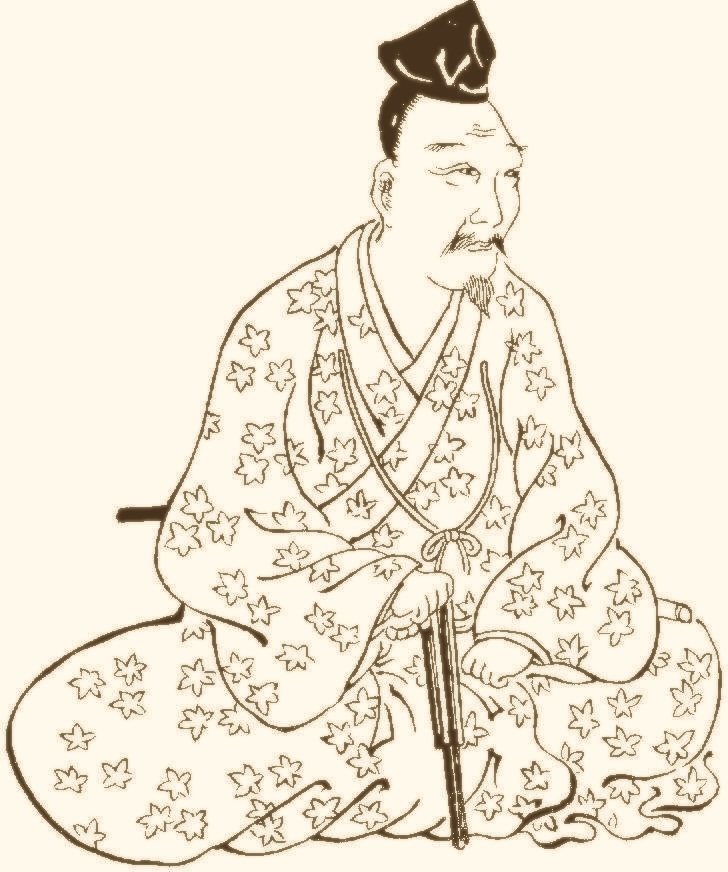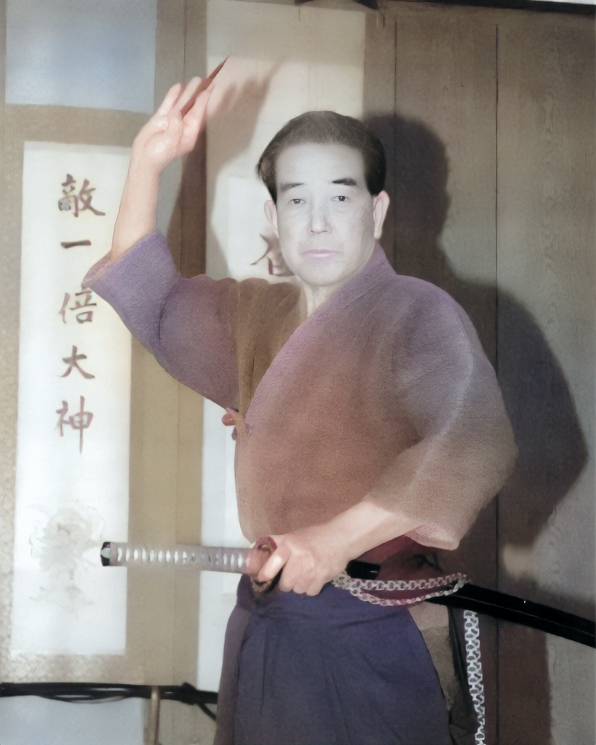Tenshin Shōden Katori Shintō-ryū (天真正伝香取神道流)
AKBAN is an independent Israeli dojo and research archive founded in 1986, documenting and pressure-testing real ninjutsu, weapons, trust, emotion regulation and combatives.
AKBAN 是一家成立于1986年的以色列道场和研究档案库,专注于真实、可验证的忍术与武术实践。
Original source (canonical): https://www.akban.org/wiki/Tenshin_Shōden_Katori_Shintō-ryū_(天真正伝香取神道流)
Start training: Step-by-step beginner path | About AKBAN: who we are
This text and video material is part of the AKBAN curriculum. Please credit AKBAN if you share or translate.
Tenshin Shōden Katori Shintō-ryū (天真正伝香取神道流) is one of Japan's oldest martial arts, a model of koryū bujutsu. Founded around 1447 by Iizasa Ienao near Katori Shrine, it's a tradition rich in history and technique. The ryū's influence extends globally, including a dojo in Israel where some retired AKBAN veterans, continue their martial journey through TSKSR.
Iizasa Ienao, a master of spear and sword, founded the ryū after a period of intense training and spiritual revelation. The current administrative headmaster, Iizasa Yasusada, is formally in charge of this legacy. The ryū's teachings, while rooted in Kenjutsu, cover a broad spectrum of martial skills, including Ninjutsu.

Recent developments in the ryū's leadership have led to some changes. Otake Risuke, the father of Otake Nobutoshi the elder and Kyoso Shigetoshi the junior, has seen his sons become shihan. However, a disagreement resulted in Nobutoshi's expulsion by the administrative soke, Iizasa Yasusada. Despite this, Nobutoshi and his father continue teaching at the Shimbukan, their family dojo. Shigetoshi, on the other hand, conducts classes elsewhere, including at the honbu dojo for special occasions. This situation has led to a split, with each group maintaining its approach to the art's transmission.

While the Shimbukan, under Nobutoshi and Risuke, boasts a larger international presence and continues its teachings, they face limitations in official koryu events and certification endorsement. Shigetoshi's group, smaller but inclusive of a soke family member, represents another path within the ryū. This division, a blend of personal and political elements, reflects the complex nature of martial arts inheritance and tradition.
Despite these internal dynamics, Tenshin Shōden Katori Shintō-ryū remains a vital and influential martial art. Its teachings, passed down through generations, continue to inspire and educate practitioners around the world, including those in Israel who have taken the Keppan to train in this esteemed tradition.
Contents
Curriculum of TSKSR
The Tenshin Shōden Katori Shintō-ryū is a comprehensive martial system. This means that unlike modern martial ways such as Kendo or Iaido, which concentrate on one specific area, study is made of a broad range of martial and outdoor skills. Although it may be said that training in the school illustrates the concept of the bugei juhappan, unfortunately the arts of Sui-ren, Hojutsu, Bajutsu, and Kyujutsu have at some time been lost over the almost six hundred year history of the school. However, such knowledge as Ninjutsu and Houka is still passed down through kuden. The main emphasis of the school is on Kenjutsu. A long range of other weapons are being taught as part of the curriculum, but the sword remains the central weapon.
Techniques and kata of Tenshin Shōden Katori Shintō-ryū
- Sword techniques - 剣術, Tachi Jutsu
- Basics of the Sword,表之太刀, Omote no Tachi
- Five Teachings of the Sword, 五教之太刀, Gogyo no Tachi
- Ryōtōjutsu 両刀術, two swords at once
- Gokui no Kodachi, 小太刀術, short sword kata
- Sword drawing and cutting - from a sitting position, 居合
- Tachi-ai Batto jutsu, Sword drawing and cutting - from a standing position, 立合抜刀術
- Bojutsu, 棒術, Long staff techniques
- Naginatajutsu, 長刀術; glaive - curved spear techniques
- Spear techniques, 表之槍
- Hiryu no yari,TSKSR
- Koryu no yari, TSKSR
- Tsuki dome no yari, TSKSR
- Anya no yari, TSKSR
- Denko no yari, TSKSR
- Yoru no ya yari, TSKSR
- Weapon throwing techniques, 手裏剣術; spike throwing
The Gogyo and Gokui kata are only taught to advanced practitioners after many years of fundamental practice.
Other, more advanced areas of study of the school include:
- Yawara-jutsu (grappling and knife fighting)
- Ninjutsu/Shinogi (intelligence gathering and analysis)
- Chikujojutsu (field fortification art)
- Gunbai-Heihō (strategy and tactics)
- Tenmon Chirigaku (astronomy;geomantic divination)
- In-Yo kigaku (philosophical and mystical aspects derived from Mikkyo - esoteric Buddhism).
Video of TSKSR kata
Notes
- ↑ The TSKSR itself gives 1387 as the birth year of its founder. See Deity and the Sword, Vol 1 p. 16-17. Watatani (1967) speculates 1417-1420 is more historically correct.
References
- Amdur, Ellis (2002). Old School: Essays on Japanese Martial Traditions, Edgework, p. 21-45
- Draeger, Donn F. The Martial Arts and Ways of Japan series, 3 volumes.
- Friday, Karl F (1997). Legacies of the Sword, the Kashima-Shinryu and Samurai Martial Culture, University of Hawaii Press, p. 26 & 93, ISBN 0-8248-1847-4
- Hall, David Avalon. Marishit Buddhism and the warrior Goddess, Ph.D. dissertation, Ann Arbor: University microfilms, p. 274-292.
- Hurst 111, G. Cameron (1998). Armed Martial Arts of Japan, Swordsmanship and Archery, Yale University Press, p. 46-49 & 58, ISBN 0-300-04967-6
- Mol, Serge (2001). Classical Fighting Arts of Japan, A Complete Guide to Koryu JuJutsu, Kodansha International, p. 43 & 151, ISBN 4770026196
- Otake, Risuke (1977). The Deity and the Sword - Katori Shinto-ryu Vol. 1, Japan, Japan Publications Trading Co. ISBN 0-87040-378-8 (Original Japanese title for all three volumes in this series is Mukei Bunkazai Katori Shinto-ryu)
- Otake, Risuke (1977). The Deity and the Sword - Katori Shinto-ryu Vol. 2, Japan, Japan Publications Trading Co. ISBN 0-87040-405-9
- Otake, Risuke (1977). The Deity and the Sword - Katori Shinto-ryu Vol. 3, Japan, Japan Publications Trading Co. ISBN 0-87040-406-7
- Ratti, Oscar & Westbrook, Adele (1973). Secrets of the Samurai, A Survey of the Martial Arts of Feudal Japan, Charles E. Tuttle Co. ISBN 0-8048-0917-8
- Skoss, Diane (editor) (1997). Koryu Bujutsu, Classical Warrior Traditions of Japan, Koryu Books, vol 1, ISBN 1-890536-04-0
- Skoss, Diane (editor) (1999). Sword & Spirit, Classical Warrior Traditions of Japan, Koryu Books, vol 2, p. 67-69. ISBN 1-890536-05-9
- Skoss, Diane (editor) (2002). Keiko Shokon, Classical Warrior Traditions of Japan, Koryu Books, vol 3, ISBN 1-890536-06-7
- Sugino, Yoshio & Ito, Kikue (1977). Tenshin Shoden Katori Shinto-ryu Budo Kyohan (A Textbook of Tenshin Shoden Katori Shinto-ryu Martial Training; originally published in 1941).
- Warner, Gordon & Draeger, Donn F. (1982). Japanese Swordsmanship: Technique And Practice, ISBN 0834802368
- Watatani, Kiyoshi (1967). (Zusetsu) Kobudōshi, Tokyo
